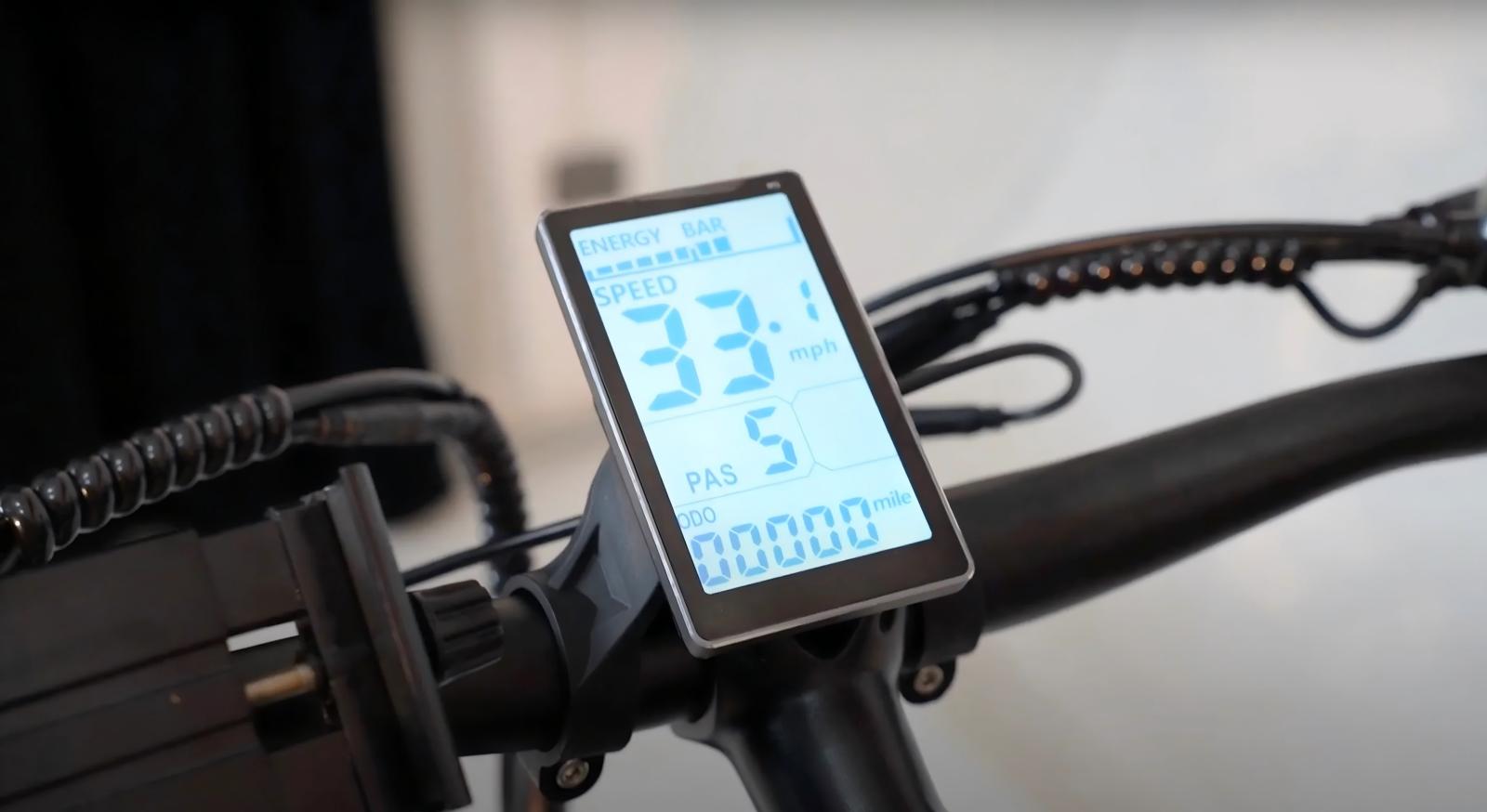E-bike displays play a vital role. E-bike displays are an added feature that emphasizes the benefits of integrated technology that sets the machine apart, even though the motor is the most important element that defines an e-bike. E-bike displays track the values of all the key parameters that you need to pay attention to while riding. Most people are only familiar with e-bike speedometers. These include a fuel gauge, which shows instantaneous power output, pedal assist, battery capacity, USB charging, and more. In this article, we will discuss the features of e-bike displays and their functions.
Battery Capacity
The top of the screen displays the battery life. Because it is essential for estimating the amount of power left after a ride. E-bike riders can use the remaining battery power to calculate how far they have traveled. The battery charge may change while riding. It is best to let the e-bike stand still for about 30 seconds to get an accurate reading of the remaining charge. Riders must keep a close eye on the battery charge when using an e-bike.
Odometer
Electronic odometer bikes display the distance ridden in kilometers or miles. It is a key tool to determine the rider's progress. Riders who display the odometer reading on the LCD screen are more accomplished than other riders.
Pedal Assist
The pedal assist mode of an e-bike makes it simpler to harness the power and acceleration of the e-bike pedals. Once you turn the motor on and select the assist level, the motor will deliver a set amount of power to the pedals. So a gentle push can turn into a ride. E-bikes have various pedal assist settings. Some range from 0-4, while others have none. Pressing the "+" or "-" button will enable power assist and vary the output of the e-bike motor respectively. Level 0 means no assist, level 1 means the least amount of assist, and level 5 means the most assist results.
Levels 1 and 2 are best when you want to push a little or increase battery range. Level 3 is good for climbing hills or riding around 15 mph on flat land. Maximum power output is produced at higher levels, and riders can easily reach speeds of 20 mph. Higher levels of pedal assist generally result in shorter battery life. The benefit of pedal assist is that it enables riders to choose the intensity of their desired workout while avoiding traffic jams.
Speedometer
The LCD panel has a speedometer that measures and displays the current and average speed. With a short press of the I button, the e-bike rider can see the current, average and maximum bike speed in km/h, one-way mileage in km, and total mileage in km. Some e-bikes have a walking mode that allows the user to relax without stopping. This feature slows down the e-bike's walking speed, making it easier to control the movement and ride on suitable terrain.
USB Charging
Some e-bikes come with a USB charging system that allows the rider to charge their electronic devices. In this technological age, riding is made more fun by the devices such as mobile phones, cameras, and music players that riders carry with them. Therefore, it is imperative that these devices have power. A good USB charging system ensures that the user does not have to worry about running out of power on their electronic devices, thus ruining the riding experience.
Power Meter
The power meter is the least noticed of all the components on an e-bike LCD, but it is essential to provide the rider with real-time information about their power usage. It enables you to keep track of the number of watts consumed at any given time. Therefore, the rider can use this information to change the parameters of the kinetics based on what they want from the battery.
Conclusion
When you want to relax after a long day at work, riding your bike around the neighborhood is a good idea. If your electric bike has many advanced display features, it will increase your riding pleasure. The electric bike display is essential. For example, the electric bike speedometer enables riders to track their progress and make smart choices.

